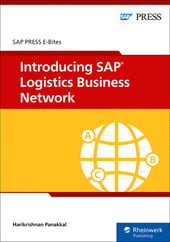As globalization has increased over the first two decades of this century, so has the use of computers to conduct business. This has been a big benefit for companies of all sizes on both sides of the supply chain.
Where manufacturers used to have to rely on local suppliers or use the phone book to find those farther away, a simple internet search can return hundreds of businesses that can provide the raw materials needed to create finished goods. And for those suppliers, the opportunity to grow networks and diversify their income streams can help keep them operational when one customer goes out of business or finds another supplier to purchase from.
SAP has long played a role in the supply chain management area, with solutions such as SAP Enterprise Resource Planning and SAP Advanced Planner and Optimizer helping to bring together buyers and sellers of raw material. More recent, cloud products such as SAP Ariba and SAP Integrated Business Planning have brought these capabilities to many more customers that didn’t have the bandwidth to host an SAP system themselves.
The idea of networking with peers hasn’t become a stale one; SAP released a brand-new solution for this purpose in 2019 called SAP Logistics Business Network, or SAP LBN. This solution serves as a vendor portal for buyers and all logistics-related stakeholders to discover new partners, connect and collaborate with all partners, and gain insight to make more-informed supply chain decisions in the future.

SAP Logistics Business Network Basics
As a repository based around SAP’s idea of “one” (for example, providing a customer with a single source of financial truth rather than having to sort through disparate systems), SAP Logistics Business Network connects those involved in the supply chain, allowing companies access to the information of all those they work with in a single location. This provides opportunity to find new business partners, gain greater transparency among logistics professionals, and more easily exchange business documents between parties.
SAP Logistics Business Network is hosted on a public cloud and serves as an alternative to the Collaboration Portal that SAP Transportation Management users may be used to. Collaboration Portal supply chain tools that are available in SAP Logistics Business Network include freight quotation, freight order, vendor invoicing, and accepting or rejecting a proposal, among others.
If this sounds similar to SAP Ariba, here’s a brief way to differentiate the two solutions: SAP Ariba consists of applications used for buying and procuring materials—applications that can also be used individually. SAP Logistics Business Network focuses more on warehousing, shipping, and receiving materials.
SAP Logistics Business Network is focused around three key areas.
Material Tracing
In order to create a new product, raw materials must be acquired from sellers. SAP Logistics Business Network helps streamline this process, joining businesses together and providing an easy way to make the purchase order. For those who want or need to keep track of the source of the material, the blockchain intelligent technology is available to keep track of the history of individual materials that make up the whole product.
Freight Collaboration
Whether a business is shipping out a raw material or finished good, or waiting on the same to be delivered to them, SAP Logistics Business Network provides a way for them to find the right freight partner to move said product. Specific integrations exist for those utilizing different transportation methods such as rail or ocean shipping. This easier collaboration can help to reduce the cost of shipping.
Global Track-and-Trace
Once goods are manufactured and shipped out via freight partners to warehouses or customers, it’s important for the manufacturer to keep tabs on the product. This isn’t just important from a logistics standpoint—providing transparency between buyers and sellers on estimated delivery time—it also helps provide financials professionals with an idea of when they may expect to update their ledgers with accounts receivable and revenue collected. By utilizing geotagged materials, individual shipments of product or the transportation mediums carrying such product can be followed in real time to see just how much longer it will be before the sales cycle can be considered complete.
Benefits of SAP Logistics Business Network
It should come as no surprise that the biggest benefits of SAP Logistics Business Network revolve around cost savings and efficiency. By serving as a “network of networks,” the solution provides easy access to scores of potential business partners, increasing competition and lowering the opportunity for price gouging. Further reduction of costs can be realized through the integration of the supply chain, reducing time and money spent working on or with different systems.
By integrating with other systems (both SAP and non-SAP), all the SCM data of a company can be stored in a centralized way that runs alongside an ERP solution like SAP S/4HANA. This decreases the siloing of information and increases transparency among all involved in the supply chain, allowing decisions to be made with less variables interfering. It also provides buyers with historical information on the materials that went into their purchased product, and keep track of when they should expect to receive the item(s).
Conclusion
It always pays to work smarter, not harder, and SAP Logistics Business Network is a way for suppliers, carriers, warehouse and yard operators, customers, and freight forwarders to do just that. By connecting all of those listed in a centralized platform, all parties can make better business decisions that positively impact their company’s bottom line.
Want to learn more about SAP LBN and logistics with SAP? Check out our list of books for both SAP ERP and SAP S/4HANA systems here.
This post was originally published 6/2021.



Comments